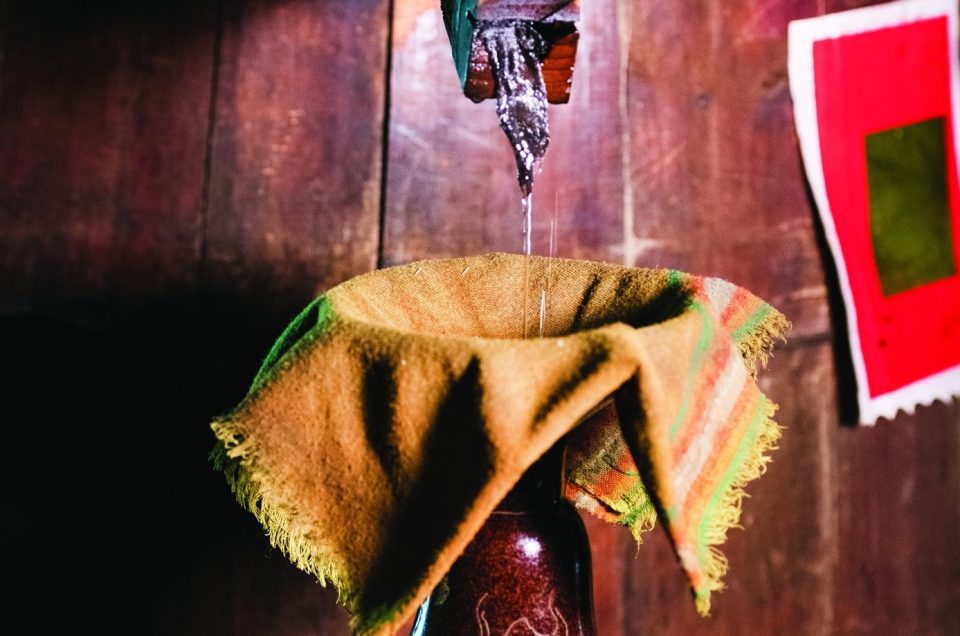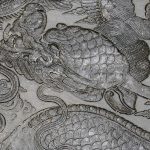Raise a glass
In the white highlands of Bac Ha, there is a folk song that goes:
“When entering, remember Trung Do Slope
When leaving, remember Bac Ha corn wine”.
The best-known corn wine hails from Ban Pho, a commune in the Bac Ha district of Lao Cai province. It’s brewed by local Hmong people following a secret recipe.
Visitors to Ban Pho can learn about this traditional craft and experience the stages of brewing wine with local Hmong people.
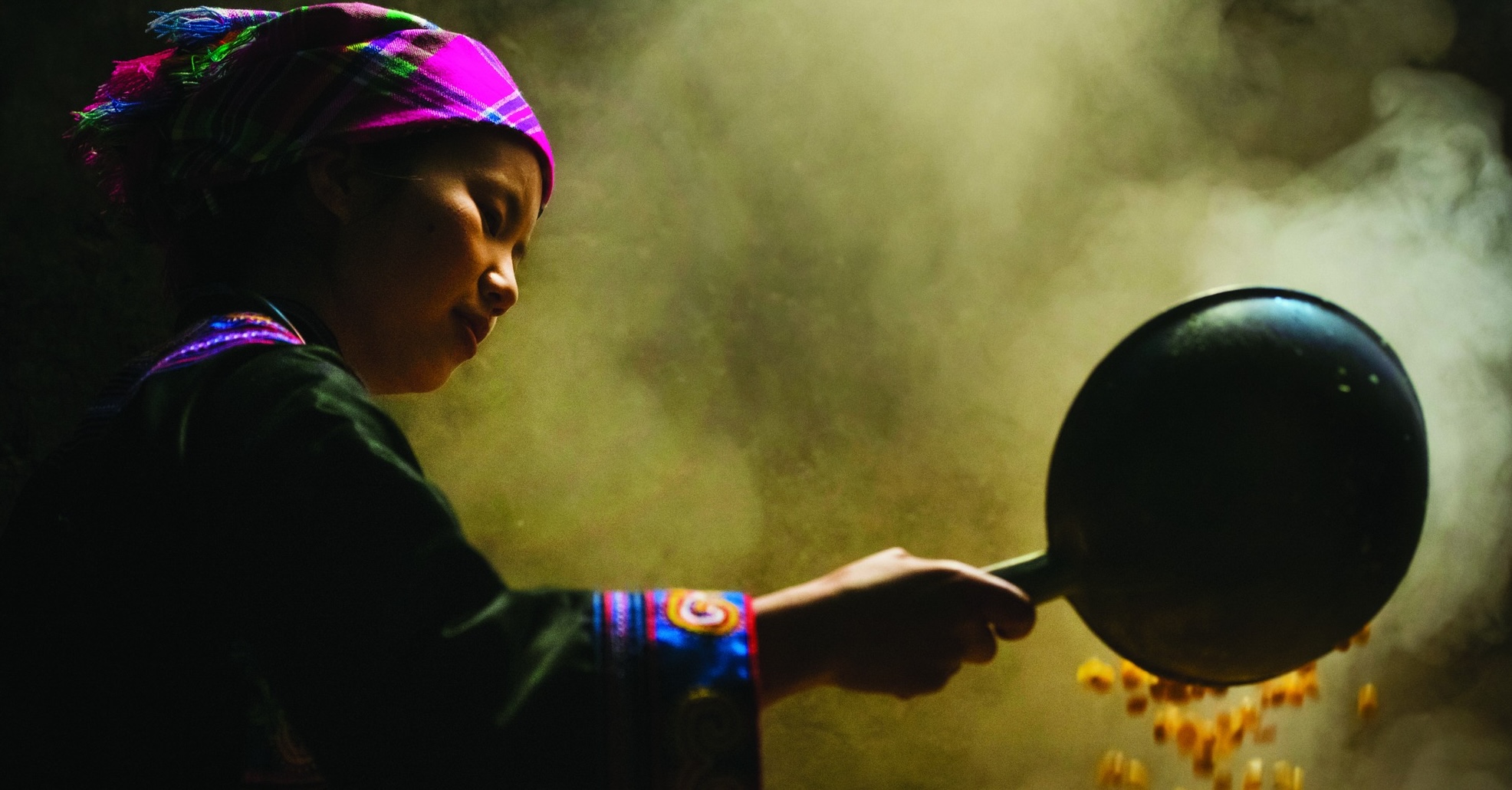
The main ingredient in this famous highland drink is yellow corn – a long-standing local corn variety grown on high mountain cliffs. After six or seven months of enduring wind, dew, rain and sun, the corn ripens to a golden yellow and becomes firm and ready to harvest. The corn cobs are sun-dried and stored above the kitchen before being used to brew wine.
The most unique feature of Bac Ha corn wine is the type of yeast used to ferment the wine, which has a beautiful name – “hong mi”. This yeast is made from the tiny black seeds of a type of grass, which is planted between corn fields or intercropped under Tam Hoa plum trees. September to October is the harvest season for hong mi, when people cut the hong mi flowers to dry for making yeast. To ensure the wine’s unique flavor, the water must be sourced from rock faces, mountain streams, or springs flowing out of caves.
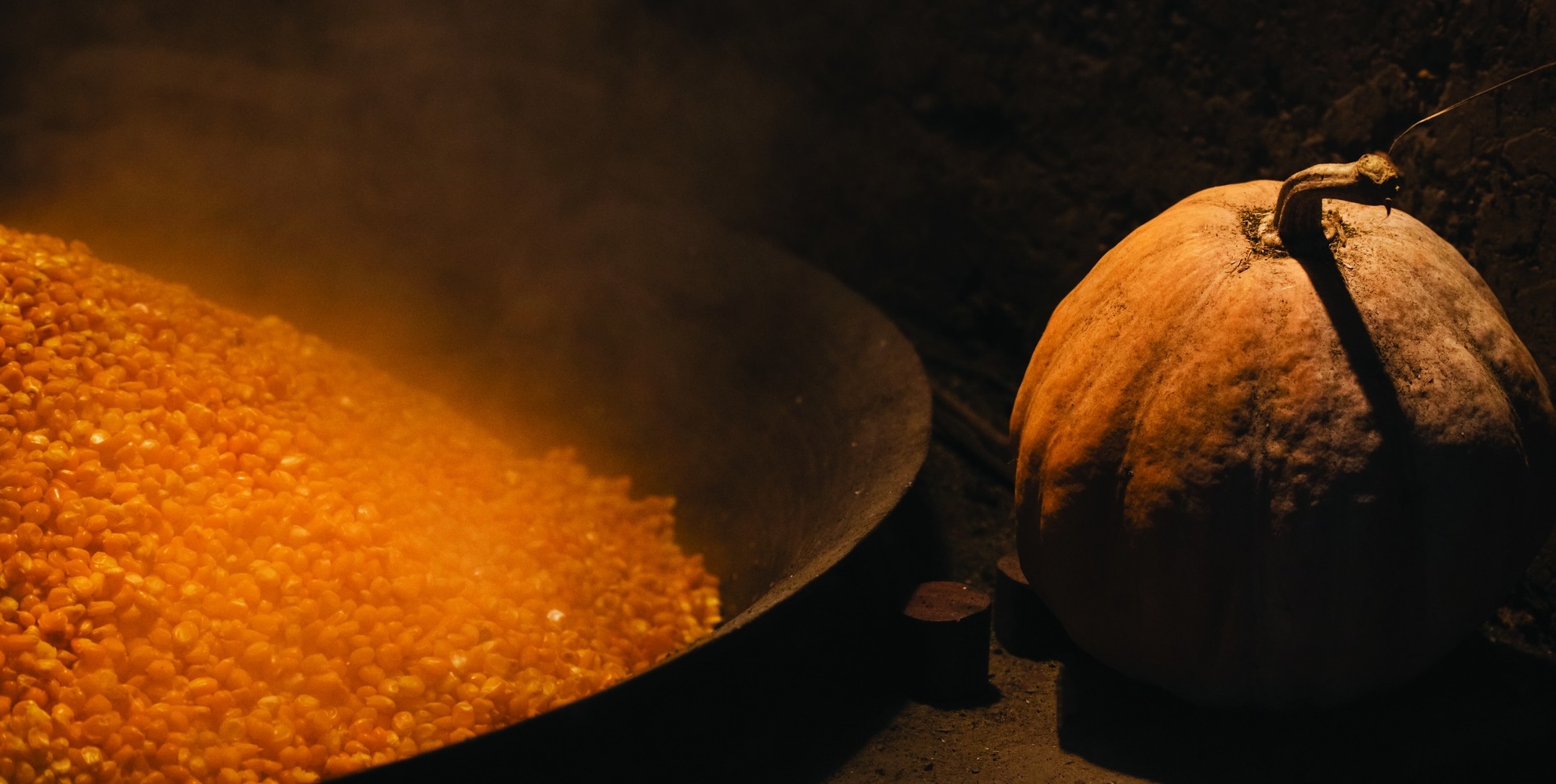
To make corn wine, the first step is to soak clean yellow corn kernels for about 20 to 24 hours. A large pan is placed over a charcoal fire that’s burning just enough to make the corn simmer in the pan. The cook must stir the corn often and add water. When the corn kernels are fully popped, they are scooped out to dry on a flat bamboo tray or mat. Once cool, they are mixed with the yeast. The yeast-making and incubation stages are very important. The hong mi seeds are put into a stone mortar, ground into a powder, filtered to make flour, kneaded with water, and shaped into cakes. The yeast cakes are placed on straw and dried in an airy place with little sunlight. When the yeast dries and turns white, it is ready. After the dried corn has cooled, the yeast cakes are crumbled into powder, sprinkled on the corn, and mixed evenly in a ratio of three yeast cakes for 10kg of corn. The corn mixed with yeast is put in a wooden barrel and placed in a cool, airy place for around five to seven days until it ferments.
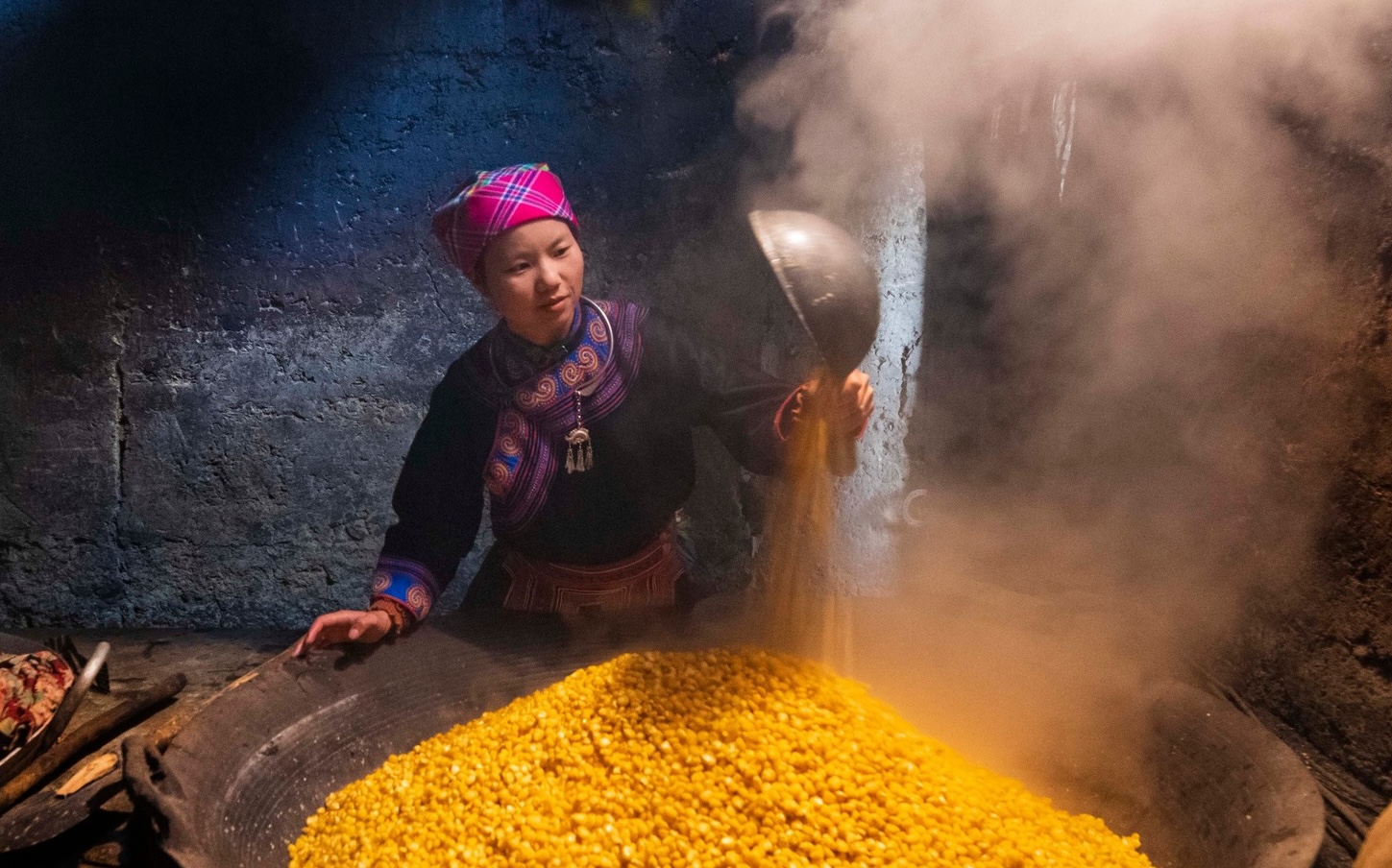
After that time, the corn and yeast mixture is put into a wooden steamer and sealed tightly to begin the steam distillation process. The steamer used for distillation is made of pine or pomu wood to produce wine imbued with a fragrant aroma. A large cast iron pan of water is placed on a wood stove, a bamboo screen is set on top, and a wooden steamer is placed on that screen. After about 30 minutes, the liquid flows through a bamboo tube connected to the wooden steamer and pours directly into fired clay jars. These jars are stored in the kitchen to help the wine retain its original flavor.
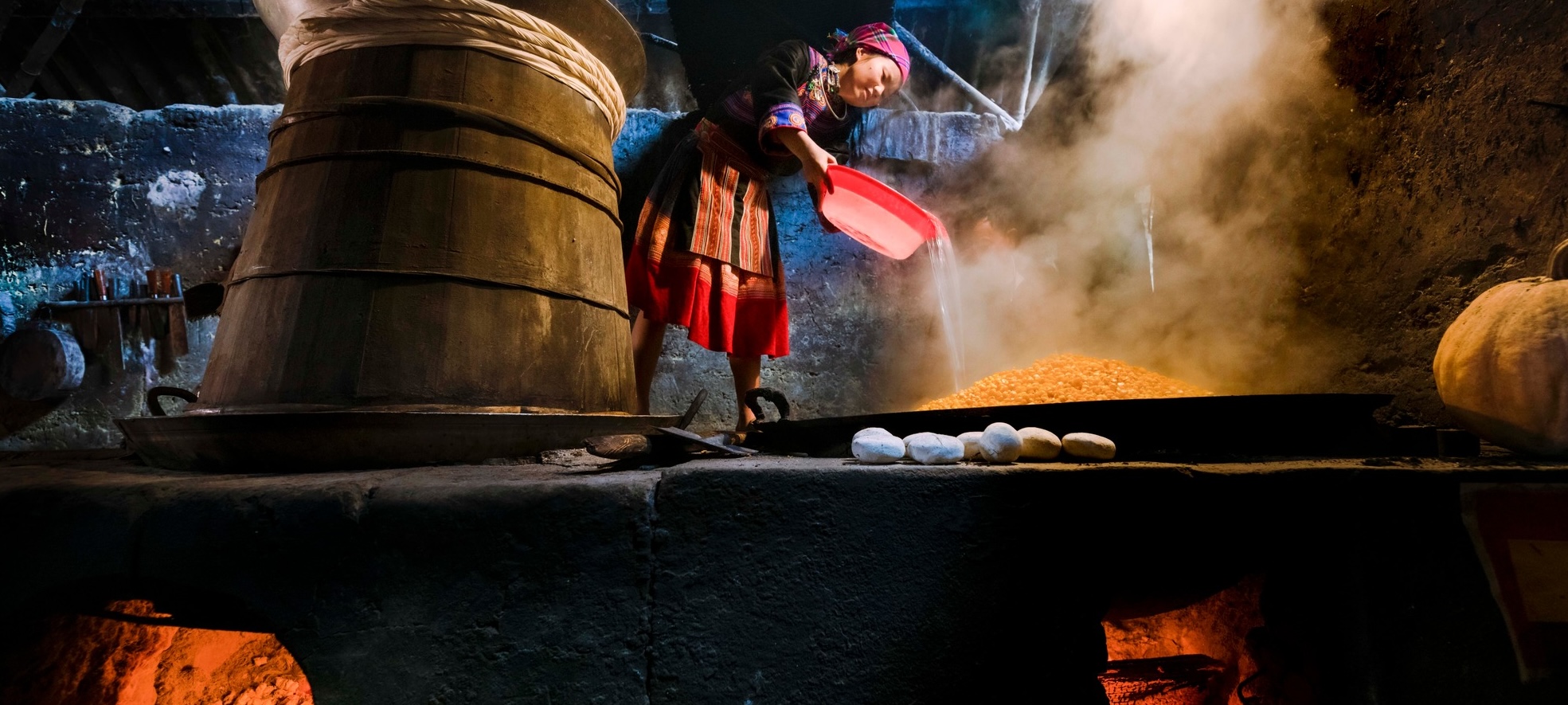
Along with carefully chosen ingredients, the experience and attentiveness of the wine-maker are important factors in determining the product’s final quality. Good corn wine is not sour or pungent. It should be clear as spring water, aromatic, and gently sweet. Hmong people in Ban Pho have accumulated valuable wine-making experience over many years.

